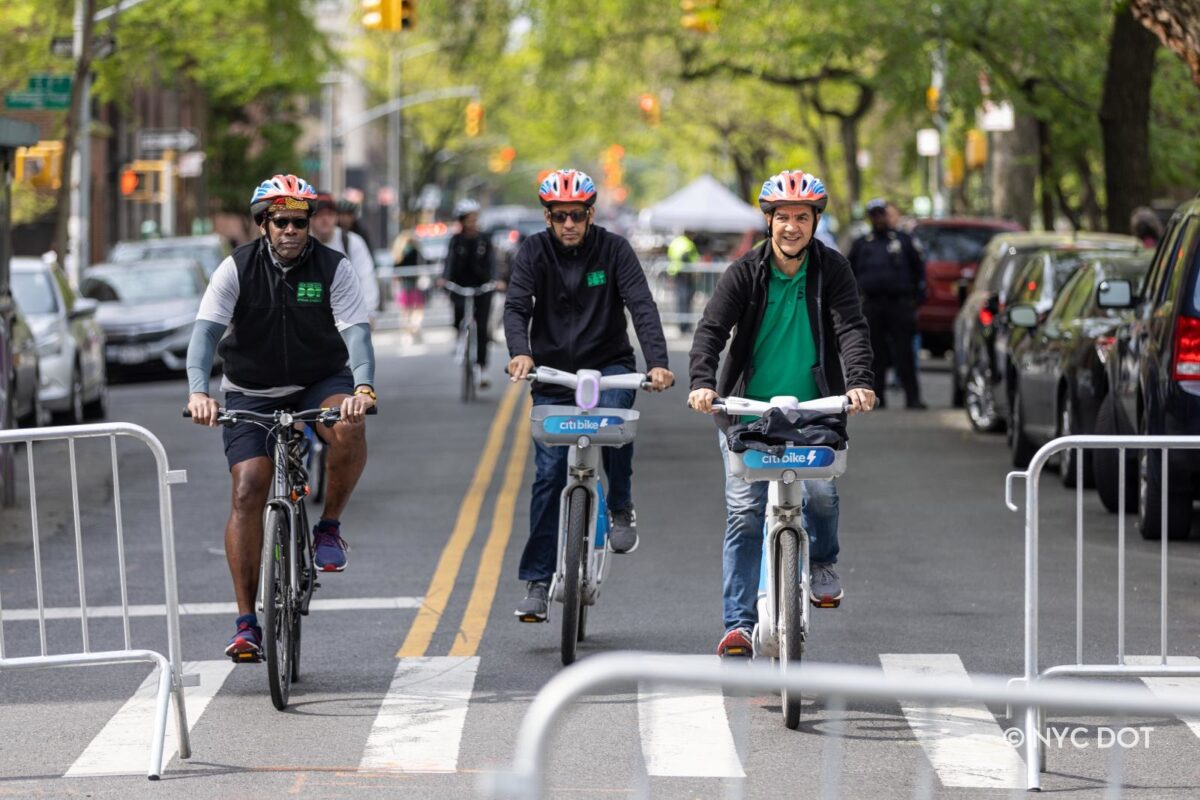City Sued For Open Streets Program, Plaintiffs Claim Discrimination Against Elderly & Disabled
By Alicia Venter
aventer@queensledger.com
A collection of New Yorkers filed a lawsuit against the city on Monday, expressing concerns that it discriminates against those protected with the American with Disabilities Act (ADA) and the elderly.
The 12 plaintiffs in Charles v. City of New York share that they are disabled New York City residents, and argue that the Open Streets Program, managed by the DOT and third-party partners, discriminates against seniors and people with disabilities.
“Only the City of New York could come up with a program that promises to eventually choke off 100 miles of public roadways (representing 1.6% of the City’s total street mileage) and 20 miles of public bus lanes, and which robs tens of thousands of disabled City residents of their independence by turning them into shut-ins, and assign it such an Orwellian “Newspeak” name as it has done here: the “Open Streets Program,” the lawsuit begins.
Many of the plaintiffs suffer from disabilities that impair mobility, strength and mobility, the lawsuit states, and they are reliant on cars for errands, medical appointments and “to generally live their lives independently and with dignity.”
The lawsuit claims that the Open Street Program runs afoul of the ADA and Rehabilitation Act, citing Title II of the ADA which provides that “no qualified individual with a disability shall, by reason of such disability, be excluded from participation in or be denied the benefits of the services, programs, or activities of a public entity, or be subjected to discrimination by any such entity.”
In response, the DOT issued the following statement: “Open Streets enhances safety, accessibility, and equity for a large number of New Yorkers using the roads, including seniors and people with disabilities. The City will review the case.”
Matthew Berman, a civil rights class-action attorney representing the plaintiffs in this case and a partner in the law firm of Valli Kane & Vagnini LLP, shared how the city has not considered the disabled or the elderly in any of their planning. Studies need to be conducted to see if there is a viable solution to have open streets — a term he finds ironic — while not inhibiting the basic needs of some citizens.
“[The city] has closed these streets without giving any thought whatsoever to the negative impact that it has on the disabled,” he said in a phone interview. “What’s happening here is that the disabled who live in our communities are being turned into shut-ins because they are relying on automobile transit to live their daily lives.”
A main concern that Berman describes is that of getting a ride to a doctor’s appointment — an able-bodied person would not think anything of walking two blocks to take a car service, such as Access-A-Ride, Uber or Lyft. However, that is not always an option for the disabled or elderly.
“If you are a disabled person, you can’t walk. You can’t get there. They have to come to your doorstep where you are stuck and stranded where you are,” Berman stated. He also expressed issues with the inability for emergency services, including an ambulance, to have access to these streets.
The city’s “Open Streets 2021 Application” states that, to prevent such issues, there must be a 15 foot emergency lane at all times. If this is not possible, the Open Streets applicant must work with the DOT and FDNY to ensure emergency access at all times.
The 34th Avenue Coalition, which is named as a defendant, submitted their proposal to the city with a graphic representation of how the open street would maintain a 15 foot emergency lane. The lawsuit counters this with an image of the supposed emergency lane inhibited due to immovable concrete blocks and planters.
The Open Streets Program, which the lawsuit repeatedly refers to as the “Closed Streets Program,” was a temporary program during the COVID-19 pandemic to provide safe outdoor spaces for people to gather. It was made permanent by the City Council in 2021.
While the lawsuit works to highlight inequities in Open Streets, there are notable social, economic and environmental benefits.
According to an October 2022 study by the DOT, Open Streets corridors were an average of 19% above their pre-pandemic baseline while control corridors were 29% below — a difference of nearly 50%.
Studies by Transportation Alternatives, a nonprofit that works to reduce the number of cars in the city to promote sustainability and safety, found benefits including redacted traffic violence to accessible public space in deprived communities.
As of April 22, the DOT plans to feature 160 locations, stretching nearly 300 blocks, in the 2023 Open Streets program. This includes 25 new locations and plans to deliver permanent redesigns to prioritize pedestrians and cyclists.
These new locations will be in Bushwick and Brownsville in Brooklyn, and South Jamaica in Queens. There are currently applications for seven new Queens Opens Streets and five new Brooklyn Open Streets.
Berman claims that some cyclists have harassed drivers — the lawyer shared that his office has a video of a cyclist yelling at a paratransit driver pulled to the curb trying to drop off a disabled person.
“The city didn’t spend any time thinking about this issue before they went ahead and said, ‘Nope, the bikers want it. We are going to give it to them. We are going to make these beautiful pedestrian plazas,’” Berman said. “It’s great if you are an able-bodied person to be able to enjoy that space, but the disabled are not provided any accommodations so that they can enjoy those spaces either.”
Accommodations for the elderly and disabled, he expressed, can be compared to the accommodations made for children heading to school. They have been ensured crossing guards — no thought to this kind of solution, or any, has been provided to the disabled and elderly who live along these open streets.


